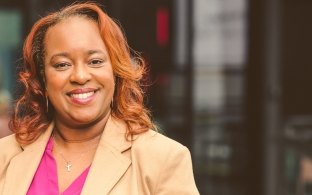Celebrating Employee-Partners during AAPI Month
McCarthy employee-partners share their personal stories, role models and how they celebrate their Asian American and Pacific Islander heritage.


SAMANTHA HUANG
Assistant Project Manager, Northern Pacific Region
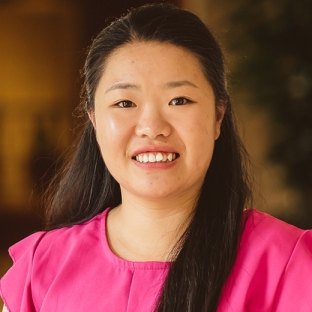
I’m Chinese, my family is from Southeast China, and we immigrated to America when I was a toddler. Growing up, my parents emphasized the importance of education being the key to a better future. They were frugal, but they would always spend on any educational needs. Education continues to become a key value in my family.
Are there any AAPI figures, role models, or historical events that have inspired you?
Our own Alice Nguyen! I first met Alice at an interview for a project in Oakland, CA. in 2017. If you were there, you would also have been impressed and encouraged with the elegance, knowledge, and leadership Alice demonstrated at the interview.
How can we as a community better support and uplift AAPI voices and experiences?
Learn to understand our partners and encourage high performing diverse teams to achieve better outcomes.
KEVIN CAPILI
Senior Project Manager, Southern Pacific Region
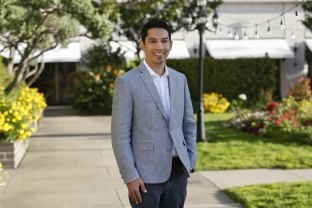
I’m from a multicultural family, I’m half Filipino (third generation) and half Caucasian. I was born & raised in Michigan and relocated to California after college.
Are there any AAPI figures, role models, or historical events that have inspired you?
My AAPI role model is my grandmother, Evangelina Esquejo-Capili. She was born in the southern Filipino island Mindanao and is the oldest of seven sisters. During the Japanese occupation of the Philippines during WWII, she helped hide and shelter her younger siblings in the jungle. Once hidden and safe, she brought them food, water and provisions while their village was under Japanese invasion so they could evade captivity. Her and her family eventually persevered through this conflict, and she carried on with life, focusing on her education and schooling. She attended Washington University, school of medicine in St. Louis, MO. She graduated with a D.O. in Obstetrics and Gynecology in the early 1950’s, becoming one of the few female physicians at the time. She enjoyed a thriving OBGYN practice for 40+ years while raising a family of her own. She lived a fulfilled life passing away at 92, and was devoted to her family, faith and community.
I share this story with you all as inspiration that no matter how bleak or grim your current situation appears, with enough grit and persistence anything can be accomplished. I’m sure this story is also one of many examples of partners who have relatives that have overcome significant obstacles so we can all be here together today. My challenge for everyone is to acknowledge those who sacrificed for us & break down cultural barriers, stereotypes and biases and together capitalize on the opportunities we have right in front of us.
ALLISON LIAIGA
VDC Engineer, Southwest Region
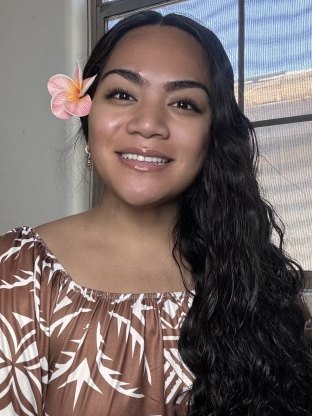
Though I was born and raised in Phoenix, Arizona, my ancestry goes back to the Polynesian island of American Samoa, located in the South Pacific. Both of my parents were raised there and made sure to instill our cultural values in all of their children, including our love of dance and music, the importance of family, and showing respect and kindness to all (especially our elders).
Are there any AAPI figures, role models, or historical events that have inspired you?
The most important AAPI figures that have inspired and shaped the person I am today would be my parents and grandma. My parents are who I get my strong work ethics from; seeing how hard they work encourages me to always put my best foot forward. My grandma's unconditional love reminds me to be humble and compassionate towards others. I owe many of my accomplishments to their support and strength.
How can we as a community better support and uplift AAPI voices and experiences?
More of these highlights or celebrations of our diversity are a great way to uplift AAPI voices. Small things like mixing up the kinds of food we choose to have at company meals can be a good way to recognize other cultures, especially since food is such an important piece of many if not all cultures.
SARAH JOHNSON
Senior Field Engineer, Southern Region

I was born and raised on the largest island in the Northern Mariana Islands, Saipan – approximately 45 square miles with a population of around 50,000. The Mariana Islands are rich in cultural diversity – originally inhabited by the native Chamorros, then colonized by the Spanish for over 300 years; purchased by the Germans after the Spanish-American war; conquered by the Japanese during WWI; and ultimately taken over by the United States after the Battle of Saipan during WWII. In 1976, the Northern Mariana Islands became a Commonwealth of the United States, to which it remains today. With all the different countries who ruled over the Northern Mariana Islands – the native Chamorro people have adopted many different cultures that have influenced our language, religion, food, and daily rituals. I grew up learning to respect and embrace the Micronesian, Spanish, Japanese, American, and Filipino cultures of my home island.
Are there any AAPI figures, role models, or historical events that have inspired you?
My maternal grandmother, Carmen Camacho Wesley-Hamilton, was a native Chamorro who grew up in Saipan during the Japanese rule. She was influenced culturally by both the Chamorros and Japanese and she spoke both the native languages, Chamorro, and Japanese. When she was a teenager, she witnessed first-hand the brutal ravages of war in the Battle of Saipan during WWII. The battle lasted for less than a month and killed about 40% of the native civilians – my grandmother survived. The war destroyed the infrastructure of the islands and the native Chamorros had to rebuild their lives all while adapting to a completely new way of life. At the age of 17, my grandmother had to learn to speak English and learn the new customs and culture under the United States rule – all while still embracing her cultural heritage. Growing up and hearing my grandmother tell her story has always inspired me to constantly take on new challenges and opportunities. Keep absorbing knowledge from people from all walks of life. Keep your mind open to new cultures and respect them as you do your own.
How can we as a community better support and uplift AAPI voices and experiences?
The biggest way we can support AAPI, and really all minority voices and experiences, is to just listen and learn. Everyone comes from different cultural background, and it is important to not only learn about people cultural backgrounds but respect them. By learning about these things, we can build bridges between different cultures to create connection between people and a diverse society.
LILY CHIU
National Quality Design Director, Corporate
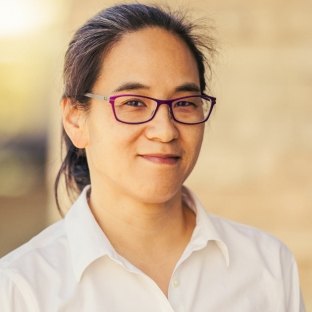
I am Chinese American. My parents were both born in Fuzhou, China, and moved to Taiwan early on. After marriage, they immigrated to Boston, MA. They had four daughters. We lived in Somerville in the 1970’s, which was urban, Irish/Italian Catholic, and working class. As non-Caucasians we stood out. Racism was culturally acceptable, as were stereotypes. Being Chinese meant that you were smart. Being Chinese in Boston meant that you were wicked smart. My parents opened a restaurant in Back Bay, and we grew up preparing food, waiting tables, managing the business. We were definitely a foodie family. The overlap of Asian Immigrant and Puritan New England was education. My sisters and I all graduated from universities in MA. Today we are an engineer, lawyer, architect and journalist. When the Chiu sisters get together, we don’t agree on much, but we always align on food and food service.
Are there any AAPI figures, role models, or historical events that have inspired you?
Since we were an isolated Chinese family, my role model was my immediate family. My mother was strong-willed and hardworking. She was a pragmatic businesswoman: make the customer happy, provide good quality, make a profit, and business development with the local restaurant critics. My sisters and I excelled in school. Being a Chiu carried street cred. What inspires me now is the increasing number of visible Asians, not just in science, but in sports and entertainment as well. It’s not who, it’s how many. There’s power in numbers, and diversity challenges the inclinations to stereotype.
How can we as a community better support and uplift AAPI voices and experiences?
I’m a sucker for a good story. It really doesn’t matter the nationality or race. If you tell me a story about someone or group that did amazing things, learning about their culture is a natural by-product. For example: When I was in grad school, my father died of a heart attack in Taiwan. My mom and sisters scrambled to get flights. We cremated him and brought his ashes home. The process of death in Taiwan is different than in the States. I recall walking through the morgue, which felt like a scene from Indiana Jones. Less fortunate dead bodies lying in open cots on either side of me, as my twin sister squeezed my arm. My father was fortunate enough to have died on the job and his company provided for a refrigerated drawer. During the funeral procession, some nerves caused my sisters and I to burst out laughing, to which we were quickly reprimanded. Laughing was disrespectful for such a solemn event. How different from an American wake where laughter is welcomed, if not therapeutic. How can we support AAPI experiences? We focus on our stories, skills and experiences. We just happen to be Asian.
NISHANT SANKHE
Assistant BIM Manager, Central Region

As a person of South Asian heritage, you hail from a region rich in cultural diversity and tradition India boasts a profound literary and philosophical legacy, with ancient texts like the Vedas, Upanishads, Bhagavad Gita, and Ramayana shaping religious and philosophical thought. Values such as hospitality, generosity, and respect for elders are deeply ingrained in South Asian culture, alongside concepts like karma, dharma, and seva (selfless service). The region is home to a multitude of languages, including Hindi, Urdu, Bengali, Tamil, and Punjabi, which play a crucial role in shaping cultural identity. South Asian cuisine is celebrated for its bold flavors and aromatic spices, with each country boasting its own culinary traditions and specialties. Family holds a central place in South Asian culture, with strong familial bonds and communal ties, often characterized by collective decision-making and respect for elders.
Are there any AAPI figures, role models, or historical events that have inspired you?
Kalpana Chawla, an Indian-born astronaut, has inspired me with her journey from aerospace engineer to NASA astronaut. Her historic achievements, including being the first woman of Indian origin in space, broke barriers and paved the way for future generations. Chawla's resilience, courage, and commitment to excellence in the face of challenges continue to inspire others. Despite the risks of space exploration, she embraced every opportunity to contribute to scientific discovery. Although her life tragically ended in the Columbia disaster of 2003, her legacy lives on, encouraging others to pursue their dreams with determination. Chawla's story serves as a reminder that with perseverance and courage, anything is possible, inspiring people to reach for the stars and beyond.
How can we as a community better support and uplift AAPI voices and experiences?
I feel what we are doing here by sharing our stories highlights is a fantastic way encourage employees to share their stories and perspectives to promote understanding and appreciation within the workplace.
